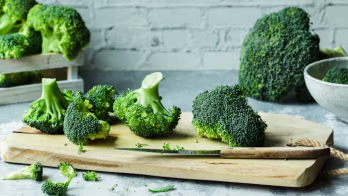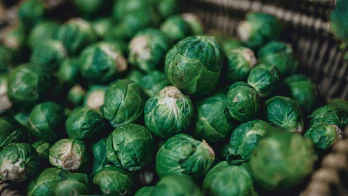Vegetables high in sources of protein that are concealed

Vegetables high in sources of protein that are concealed
1. Spinach
- Protein content: ~2.9g per 100g (raw)
- Why it’s “concealed”: Spinach is mostly water and very low in calories, so most people think it’s negligible for protein. However, when eaten in larger amounts or cooked down, it contributes significantly to protein intake.
- Tip: Add to smoothies, omelets, or cooked dishes to boost protein subtly.
2. Kale
- Protein content: ~4.3g per 100g
- Hidden benefit: Like spinach, kale’s protein is often overlooked due to its leafy appearance.
- Tip: Use in salads, soups, or make kale chips for a protein-rich snack.
3. Broccoli

- Protein content: ~2.8g per 100g
- Why it’s unexpected: Many consider broccoli primarily a vitamin and fiber source, but it contains decent protein.
- Tip: Steam or roast it; pair with other protein sources for a full amino acid profile.
4. Brussels Sprouts
- Protein content: ~3.4g per 100g
- Hidden nature: These mini cabbages are nutrient-dense but not commonly recognized as a protein source.
- Tip: Roast or sauté to enhance flavor and integrate them into meals for a stealth protein boost.
5. Asparagus
- Protein content: ~2.2g per 100g
- Why it’s concealed: Often seen as a low-calorie side dish, not a protein contributor.
- Tip: Grill or steam as a side dish; mix into frittatas or pasta.
6. Mushrooms (especially shiitake, portobello)
- Protein content: ~3–5g per 100g (varies by type)
- Hidden advantage: Mushrooms are fungi, so many people don’t consider them protein-rich.
- Tip: Add to stir-fries, soups, or use as meat substitutes in vegetarian dishes.
7. Peas
- Protein content: ~5g per 100g (fresh)
- Surprising fact: Peas are technically legumes, but when eaten as vegetables (fresh or frozen), their protein often goes unnoticed.
- Tip: Add to soups, risottos, or make pea-based spreads.
8. Edamame (young soybeans)
- Protein content: ~11g per 100g
- Hidden nature: When shelled and lightly steamed, many people just see a snack, not a high-protein vegetable.
- Tip: Serve as a snack, in salads, or mixed into grain bowls.
9. Collard Greens
- Protein content: ~3g per 100g
- Why it’s not obvious: Commonly associated with fiber and iron rather than protein.
- Tip: Sauté with garlic or add to soups and stews.
10. Artichokes
- Protein content: ~3.3g per 100g
- Hidden benefit: Seen mostly as a fiber-rich vegetable, artichokes also supply a good amount of plant protein.
- Tip: Boil or grill hearts for salads or dips.

Quick Takeaways
- Leafy greens like spinach, kale, and collard greens may seem insignificant, but in quantity, they provide meaningful protein.
- Mushrooms and peas are stealth sources that many overlook.
- Soy-based vegetables, especially edamame, are protein powerhouses disguised as vegetables.
Tip for maximizing protein intake from vegetables:
- Combine different vegetables to get a more complete amino acid profile.
- Pair with grains (like quinoa, brown rice) or seeds (like pumpkin seeds) for plant-based meals that are higher in protein.









